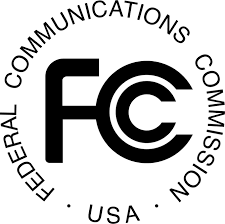
What is the Universal Services Fund and How is the Money Used?
 Universal service is the principle that all Americans should have access to communications services at reasonable rates in every part of the country. The Federal Communications Commission (FCC) oversees several programs and a fund designed to achieve this goal. In fact, the Communications Act of 1934, which introduced the idea of universal service established the FCC itself. The act helped make telephone service available to rural areas that would have otherwise been unserved by telecommunications carriers. Now that much of the nation’s communications take place over high-speed Internet connections, rather than traditional land-lines, the FCC is working to make broadband available to all Americans.
Universal service is the principle that all Americans should have access to communications services at reasonable rates in every part of the country. The Federal Communications Commission (FCC) oversees several programs and a fund designed to achieve this goal. In fact, the Communications Act of 1934, which introduced the idea of universal service established the FCC itself. The act helped make telephone service available to rural areas that would have otherwise been unserved by telecommunications carriers. Now that much of the nation’s communications take place over high-speed Internet connections, rather than traditional land-lines, the FCC is working to make broadband available to all Americans.
Programs
The Universal Service Fund provides support through four programs:
The Connect America Fund, once known as High Cost Support, subsidizes qualifying telecommunications carriers that serve high-cost, low-margin areas. These tend to be rural communities that might not otherwise have access to communication services. The support helps keep the rates for these customers similar to those in more populated areas.
Low-Income Support, sometimes known as the Lifeline program, helps low-income customers pay for monthly telephone charges to ensure that service is affordable.
E-Rate, otherwise known as Schools and Libraries Support, provides voice and Internet access, as well as internal networking to eligible schools and libraries.
Rural Health Care Support is designed to ensure that rural healthcare providers’ communication services rates are in line with what providers in urban areas pay. Both voice and Internet access are subsidized.
Funding
The Universal Service Fund is paid for by contributions from providers of telecommunications based of an assessment on their interstate and international end-user revenues. Contributors include landline providers, wireless carriers, and internet based voice service providers, such as SIP.US, along with cable companies that provide voice services. Service providers routinely recover this contribution from customers based on a contribution factor announced by the FCC and subject to modification by the FCC.
Recognizing the importance of Internet access in modern life, the FCC is working to bring all of the programs into the 21st century to increase access to modern broadband and voice services. While no one likes to pay fees, the Universal Services Fund supports important programs that strive to keep all Americans connected.


